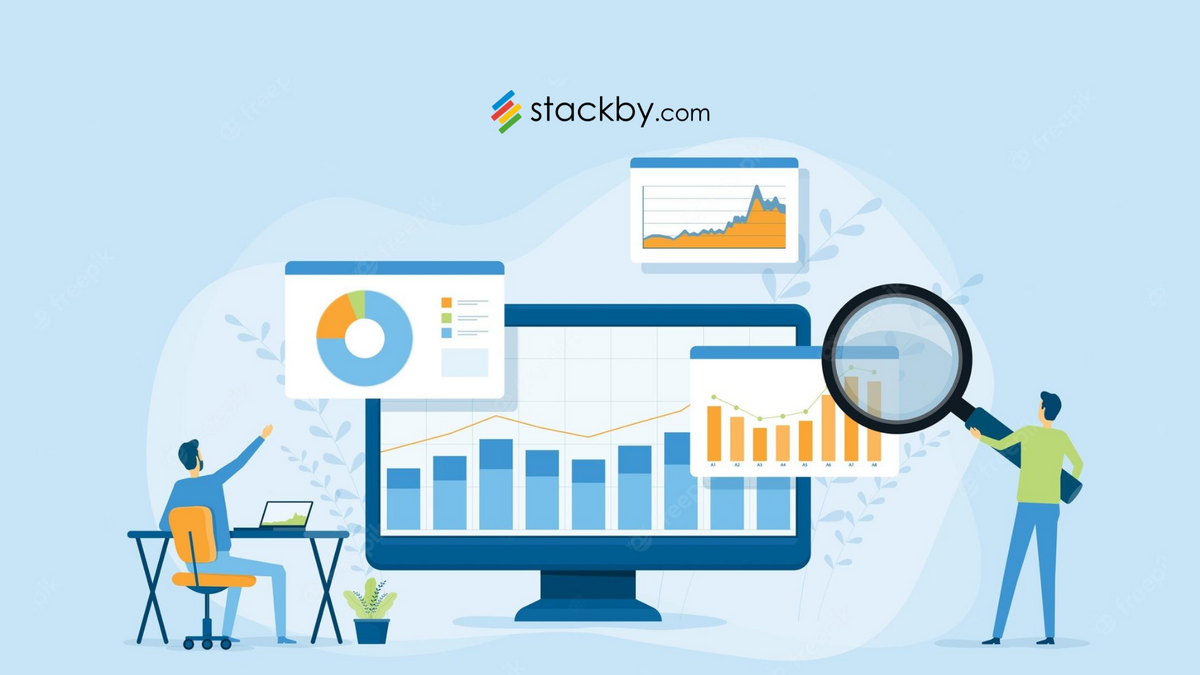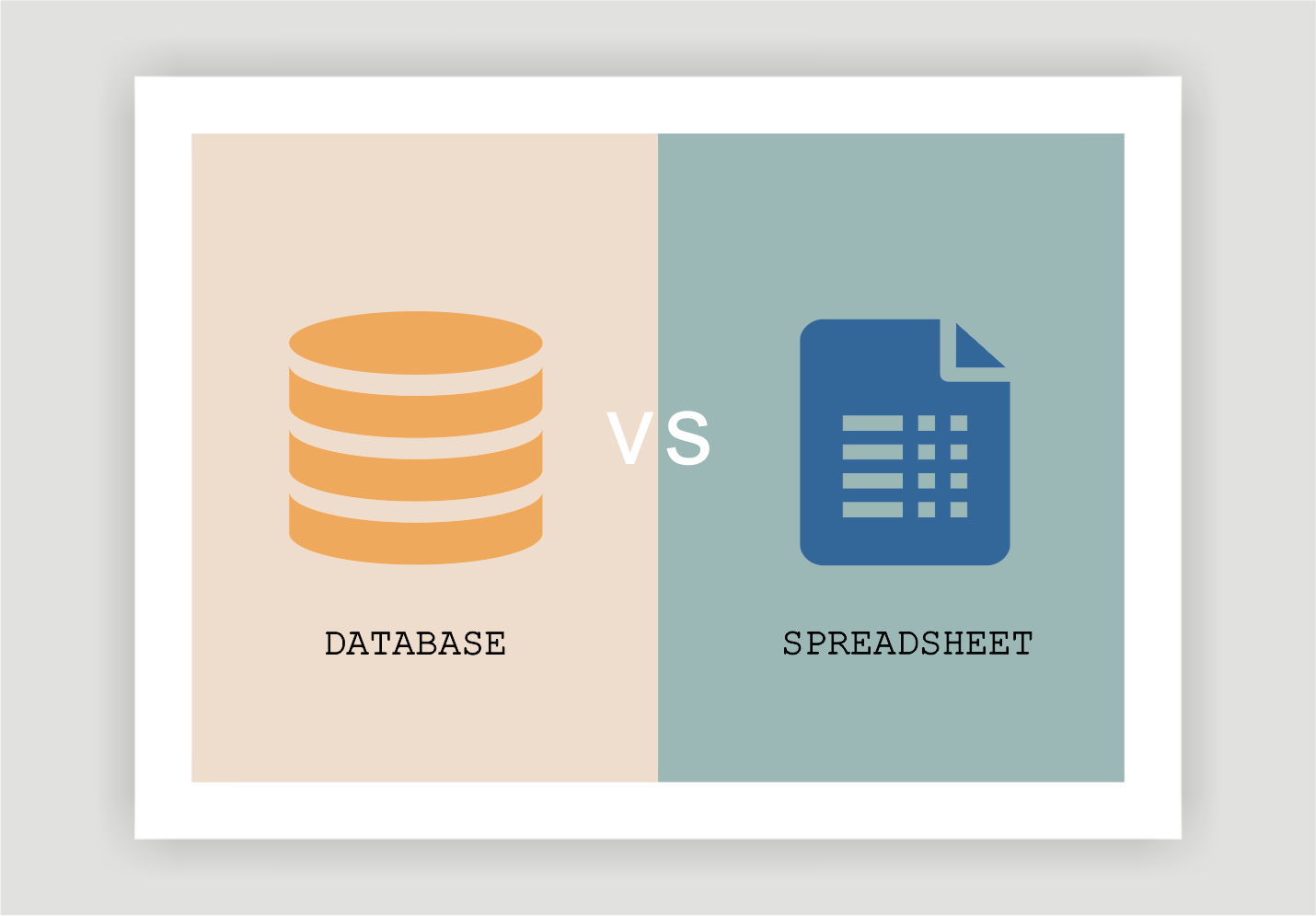What is a Database? And why you should consider one ?
A database is an organized, electronic storage system for data, which can encompass words, numbers, images, videos, and various other types of files.

Introduction
The world runs on information, which, in today’s technology-driven age, is stored as data. Unimaginably vast amounts of data is created every second of every day, and where does it all go? To a database. They have become essential to the functioning of entire industries and even governments worldwide. This article presents an overview of what a database is, how it works, its history, and why the use of one is an inescapable part of daily life.
What is a database?
A database is a collection of information, i.e., data, organized to enable easy access and management. The term is most commonly used in reference to data stored in the form of files on a computer or nowadays, on a cloud via the internet.
Databases are structured in such a way that a computer can rapidly search, retrieve, change and delete data as and when needed. A Database Management System (DBS) is a software used for this purpose. Some popular systems include Oracle Database, Microsoft Access, MySQL, among many others. The term ‘database’ commonly refers to both the actual database itself and the DBMS that manages it.
How to Build Forms in a Database 2024 - Step by Step Guide
How does a database work?
The exact processes and functions differ with various databases, but the basic logic behind the term can be defined in a generic manner. Data is stored in the form of files, which contain individual records. Each record in turn contains a set of fields. A single field will tell you only about a specific attribute of the subject of the database. All records are structured in relation to one another, usually in tables that show the relationship between them. Data stored this way is easily sorted, displayed, and modified according to the user’s demands. It can be cross-referenced and extracted to create reports and analyses as well.
Difference between spreadsheet and database
Databases and spreadsheets are different, but only few really understand the difference and why you should use over another. Quick read the dedicated article below:

Who uses a database?
The short answer: practically everyone, directly or indirectly. There are numerous industries that carry out their day-to-day activities thanks to a well-maintained and convenient database. Take any company, small or large - it will collect information while functioning, and the obvious destination for all that data is a database. Whether it’s sales, accounting, HR, commerce - all these departments need to access data and analyze it to do their jobs better. For example, an investor database provides an edge in identifying and assessing potential investment opportunities efficiently.
Even outside the corporate world, government institutions like railways, public libraries, banks, educational institutions, hospitals – all of them rely on a database to keep track of the huge amounts of information they deal with regularly. Databases are also used by countless individuals worldwide, and it wouldn’t be an exaggeration to claim that the world wouldn’t run without them.
Why do you need a database?
For any organization working with data, an efficient database reduces data redundancy and lowers costs on data entry, storage and retrieval. It also maintains data integrity by closely managing any and all changes made to the data. Storing your vital data in a database also ensures it stays secure and access to it is controlled by the organization. But the most common action we do with data is access it, and a good database will be able to store, sort, and display huge volumes of data quickly and accurately.
In the corporate world, cutting-edge tech innovations like the Internet of Things and Big Data are transforming how companies approach business operations. Databases now go beyond merely storing and recording data and transactions; the best ones are able to analyze and leverage an ocean of data in minutes. This powers better decision-making, and increases the scalability and pace of innovation a company achieves.
Evolution of the database
‘Data-base’ is a term that originated in the 1960s in California with the advent of early navigational data models. As computers evolved in terms of their speed, processing power, and capabilities, so did databases. The first databases were ‘flat’, which meant the data was stored in a particular sequence as a simple list of entries, for example, from A to Z, numerically, by date, etc.
An example of an early database type is the hierarchical model, where records were stored in a tree-like structure, and had to be traversed from the root upwards using links. This model was superseded by the network model, which utilized multiple linkages between records, improving the speed and efficiency of the database.
These rather inflexible databases lasted until the 1980s, when they were overtaken by the relational model, first developed by E.F. Codd in the 1970s. This model uses mathematical logic to structure data in rows and columns that are arranged according to type and the relation between each record. DBMS in the relational model use different iterations of SQL or Structured Query Language, to respond to users’ queries when retrieving data.
Many more types evolved over the decades, like the object-oriented model in the 1990s, that restructured complex data into ‘objects’, and proved to be more flexible than ever. NoSQL databases grew popular with the rise of the internet age and the need for faster data manipulation.
Today, cloud databases assisted by other innovative technologies like machine learning and AI are the ideal choice for any forward-thinking enterprise that seeks to stay ahead of the curve.
Cloud databases: an overview
A cloud database is built, deployed, and accessed via a cloud platform. It fulfills the requirements of any other database, but with the added convenience and flexibility that cloud computing has to offer. It negates the need for companies to invest in hardware like physical servers to host their database, and can either be managed directly by the enterprise, or a specialized provider. Cloud databases are accessed using an online interface or an API developed by the cloud database vendor.
Cloud databases are much faster and offer instant dedicated server resources to set up and start using, since no time is spent ordering equipment and setting it up physically. They are a more economical option for companies looking to grow rapidly, since there exist many subscription-based models that scale along with the business and accommodate its dynamic needs. Storing data on the cloud also presents fewer risks than a physical database does, securing the data on remote servers in the case of system failures or natural disasters.

Challenges faced with databases
Databases used by large companies host humongous stores of data and process a multitude of queries that only grow more complex by the day. Administrators and developers have to keep up by devising new ways of managing data and enhancing the user experience. Here are some of the most pressing yet common difficulties they face:
- Complexity: The first step is for a company to select the right kind of database model, as well as the right vendor. Whether it’s a NoSQL model or an advanced cloud database, the company must make sure it is best suited to their requirements.
- Volume: The volume of incoming data from users, IoT sensors, connected equipment, is nothing short of an explosion in these data-driven times, and managing it all efficiently is a difficult but worthwhile endeavor.
- Scalability: Predicting the required data capacity for a business that’s looking to scale is a tough task, especially when operating systems, database architecture, and hardware, and dozens more variables all affect how quickly a company scales.
- Security: Hacking is becoming more widespread, and data breaches could cause immense damage to a company’s finances and reputation. Keeping large volumes of data safe from security risks is also a major concern.
- Infrastructure Maintenance: As the company scales, admins must stay on the lookout for potential issues and perform maintenance with a preventative approach. Constantly upgrading infrastructure and employing additional support to manage it is a pressing concern for large databases.
- Performance : Database performance is especially relevant at a time when people are less tolerant of sluggish digital experiences, and this takes constant effort and oversight. For instance, if you’re using MariaDB database software, implementing optimizations for making your database work faster is wise, as it makes life easier for end users.
Database FAQs
Q1 : What are the top databases worldwide?
According to statista.com, “As of August 2022, the most popular database management system (DBMS) in the world was Oracle, with a ranking score of 1260.8; MySQL and Microsoft SQL server rounded out the top three.”
Q2 : What programming language is best for databases?
Structured Query Language or SQL is the top choice for developers because it is a robust and powerful tool that enables high speed and great efficiency.
Q3 : Is Microsoft Excel or similar softwares considered a database ?
No, Excel is merely a spreadsheet software while a database usually comes with a DBMS that organizes the data more effectively and enables structure & efficient data handling and access.
Conclusion
The ubiquity of databases across industries and fields only reinforces how vital they’ve become to our digitally connected world. Selecting the right database, understanding how it works, and evaluating its effectiveness are all important for any organization that wants to get the most out of their investment. Talk to our experts before you make your choice.
If you are interested in seeing how people use databases from sales to marketing to product management to content production to real-estate and non-profit management, check out Stackby’s 300+ free database templates. Additionally, if you want to learn how to switch from spreadsheets to a database, watch this free webinar.


![A Simple Guide on Workflow Management Software [Updated 2025]](/blog/content/images/size/w960/2021/12/work-management-blog.png)


